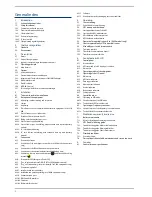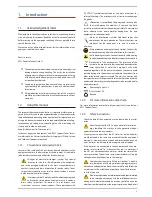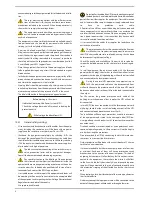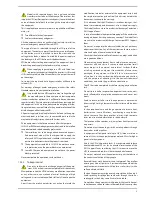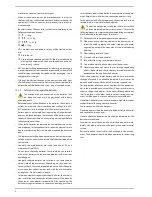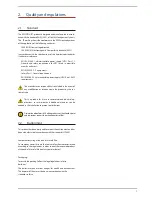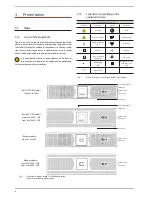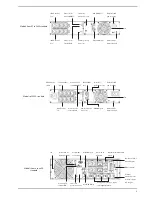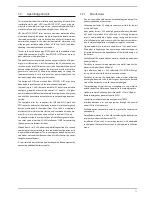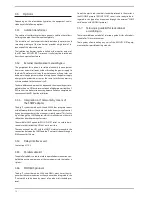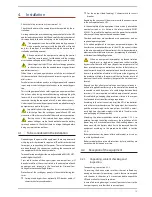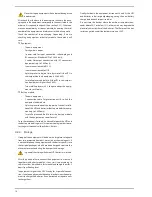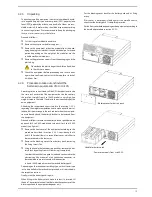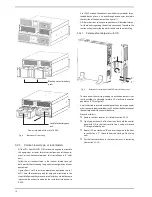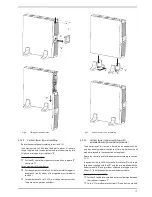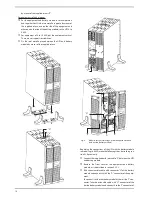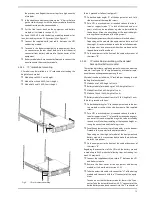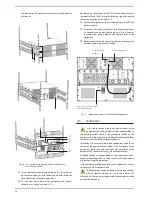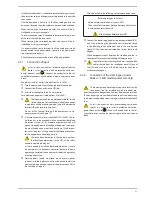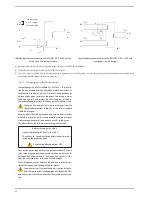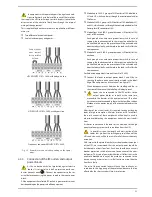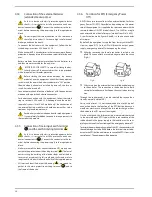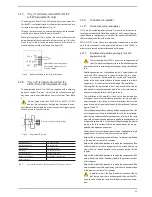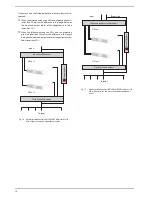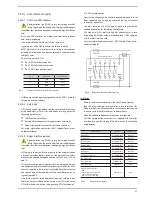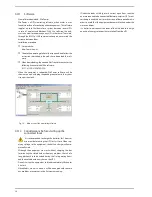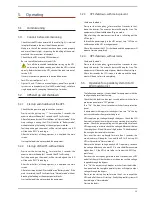
14
never start up an equipment when external damages can
be observed.
• Also check that the data in the nameplate sticked in the pack-
aging and in the equipment, correspond to the ones stated in the
order, so it is required to unpack it (see section 4.2.3). otherwise,
make a nonconformity as soon as possible, by quoting the serial
number of the equipment and references in the delivery note.
• Check the contents of the packaging. Depending, if we are
checking an equipment or battery module, the contents will
vary.
Equipment:
– The own equipment.
– Quick guide in paper.
– 1 power cord for input connection -schuko plug and
iEC connector- (Standard UPS of 3 kVA only).
– 3 cables for output connection with iEC connectors
(equipments up to 3 kVA only).
– 1 communication cable RS232.
– 1 communication cable USb.
– 4 plastic pieces to be joint two by two to fit the UPS in
vertical position (only equipments 4 to 6 kVA).
– 2 metallic pieces and bolts to fit the UPS in vertical posi-
tion (equipments higher than 3 kVA).
– Two metallic pieces with l shape to adapt the equip-
ment to rack format.
battery module:
– The own equipment.
– 1 connection cable for protection earth, to link the
equipment and module.
– 2 plastic pieces to adapt the supports of vertical installa-
tion of the UPS and batteries (battery modules for equip-
ments up to 3 kVA only).
– 1 metallic piece and bolt to joint the battery module
with the equipment on tower format.
• once the reception is finished, it is advisable to pack the UPS and
the battery module/s again till its commissioning in order to pro-
tect it against mechanical shocks, dust, dirt, etc...
4.2.2. Storage
• Storage of the equipment will be done in a dry place, safeguard
from rain, protected from dust, water jets or chemical agents. it
is advisable to keep the equipment and the battery pack/s, into
their original packages, which have been designed to assure the
maximum protection during the transport and storage.
•
in general the storage lifetime of UPS batteries is limited.
• After this period of time, connect the equipment to mains and
together with battery module/s, if any, start it up according to
the instructions described in this manual and charge them for 2
hours from floating level.
in equipments higher than 3 KVA ready for its parallel connec-
tion, it is not needed to make the connection between the equip-
ments to charge the batteries. it can be treated as separate units
to charge them.
• Finally, shutdown the equipment, disconnect it and fit the UPS
and batteries in their original packaging, noting the new battery
charge date on each respective label.
• Do not store the devices where the ambient temperature ex-
ceeds above 50ºC or below –15ºC, otherwise it may degrade the
electrical characteristics of the batteries. The lifetime of the bat-
teries can get reduced if the temperature is not 20°C.


